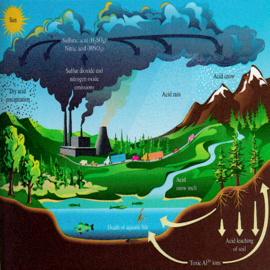
Introduction
To be a consumer in the United States (US) is simple. In fact, it is the wealth and abundance of goods that attracts many immigrants to the US. Who would not want to be able to live in a spacious home, drive a large vehicle and frequent, mega stores such as Wal-Mart and warehouse stores such as Costco? In fact, there is something addictive and seductive about the way goods and services are sold in the US. It is not that there is a great necessity, but rather marketing is done so well and with such skill that the buyer “has to have” the items that they are faced with. The once in demand item of yesterday becomes an item tossed in a garage for an upcoming garage sale or given to a local charity or dropped off at a local collection drop-off site. It is as if the more, the bigger, the better is desirable such that having material goods renders one more in vogue and fashionable.
To be part of the “it” crowd one has to relentlessly give up the former (perhaps only days or weeks old) and upgrade for the now faster, newer, sleeker, television, cell phone, computer or IPOD. Such is the case in virtually all of suburban communities in the US. Communities where 2-4 people reside in a 3-4 thousand square foot home, with several large SUVs parked in the driveway, and have access to a number of stores, shopping centers etc. Conversely, there is the other side of town, the part of town that most do not want to acknowledge, or ever visit, except for when needing a service or product that can only be sought in the ethnic or migrant community.
In such communities, one can not spot a hummer or drive by a row of over priced homes, or gorgeously manicured lawns. The members of these communities are the service providers for suburbia. They are the ones who mow the lawns, care for the children and clean the homes of their employers. They visit their well-off employers; render a service or provide a product and then go back home to face their own day to day struggles. What is described is not unique to my home town of San Diego, California. In fact the above circumstances can be in India, China, or some other part of the world.
I will not argue that through better sustainability practices we will be able to rid the world of poverty. I also confess that it is difficult to ask the “haves” to share with the “have nots”. With that, I would like to look into sustainability in the context of an environmental sustainability and look into the ways to create distributive justice. What are possibly some of the obstacles? Within the sphere of social equity I will take a look at distributive justice through the eyes of a bi-cultural American. My American acculturation has taught me that consumerism is good and the old adage is “the more, the better”. My Persian heritage and culture has taught me that in fact “less is more” and material goods should not define my identity. As the author of this paper, both of those perspectives will seep through my writing and exploration of environmental sustainability, within the realm of distributive justice.
For the purpose of this analysis I will be using the following operational terms:
Consumerism: the theory that an increasing consumption of goods is economically desirable; also: a preoccupation with and an inclination toward the buying of consumer goods. (Merriam Webster Dictionary)
Sustainable Development
Caldwell [1] writes: The sustainability of human society in the future depends upon the skill and willingness of humans to order their behavior and institutions toward maintaining ecological integrity in human relationships with earth. Lemons [2]
Additionally, there are a number of operational definitions used in the field to characterize sustainability. On its own, sustainability does not mean much, when paired with development it has a modified meaning given that development means action of some sort. Lemons [2] What’s more, sustainability implies the safeguarding of a steady-state condition, and perhaps of preservation. Yet, others have defined sustainability from an economic perspective as the “maintenance of capital.” Goodland [3]
Environmental Sustainability
According to Leuenberger [4], environmental sustainability offers an opportunity to move beyond market-based decision making mechanisms toward plans that allow long-term and concurrent benefits for multiple stakeholders. Leuenberger [4] Moreover, Leuenberger and Wakin’s “Sustainable Development in Public Administration Planning: An Exploration of Social Justice, Equity and Citizen Inclusion” explores the prospect of sustainable development as a tool for increased social justice, equity and citizen inclusion in public administration decision making. Leuenberger [4] The paper suggests that equity and social justice built on meaningful citizen participation needs to be a part of sustainable development. To be able to focus on long term change, incremental steps may not be the solution, but rather transformational changes may be required. Leuenburger [4]
Conceivably a definition of steady-state society can be integrated into a sustainability. Ophuls [5] defines steady-state as: preservation of a healthy biosphere, the careful husbanding of resources, self-imposed limitations on consumption, long-term goal to guide short-term choices and a general attitude of trusteeship toward future generations. Ophuls [5] Similarities amid the sustainability of economic systems and environmental systems are evident in understanding the significance of the concept of carrying capacity Catton [6], and Rees [7] This refers to the greatest load of human use that can be sustained by an environmental without diminishing its future suitability for supporting an equal load. In this case, human load is a function not only of population numbers but also of per capita use. The limitations of an environmental carrying capacity is particularly problematic in the United States since our increasing population, changing population profile, and per capita consumption rates are making greater demands on our ecological resources and natural capital at the national and global levels.
Elliot [8], Wackernagel [9], and Rees [7] described the connections between sustainability and natural capital in this way: Sustainability implies that nature’s capital should be used no more quickly then it can be replenished. Nonetheless, trade and technology have enabled mankind progressively to exploit nature far beyond sustainable levels at a rapid rate so that present consumption exceeds natural income (the “interest” on our capital). This condition leaves the next generation with depleted capital and less productive potential even as the population and material expectations increase. Wright [10]
Distributive Justice
Defined as: an essentially just society… does not need to shape individuals in order to afford them justice… In saying that an essentially just society is neutral with respect to the aims of its members, we deny that justice is linked to any substantive conception of what is good, either for the individual or for society. Kymlicka [11], Raz [12]
Within this realm, the starting point will be distributive justice. The concept of social conflicts occurring based on environmental entitlements, how do we split the pie? Martinez-Alier [13] And is there enough to go around for everyone? Whether intentional or not, the growth of a worldwide movement for environmental justice, which may become a strong factor, has focused on how future generations perceive social equity and distributive justice. Martinez-Alier [13] Before further exploration I would like to preface that not all environmentalist resist growth. Likewise, many of them benefit from the same opulent lifestyle as described in the introduction for this paper.
Behavioral Obstacles
According to Ophuls [5], we have done not much during the last 20 years, but to symbolically care by celebrating earth day…we have done all of the easiest and least painful things. “Now we must do the hard things; reshape basic attitudes and expectations, alter established lifestyles, and restructure the economy accordingly.” Ophuls [5]
The problem of marrying environmental sustainability with distributive justice is similar to healthcare coverage in the US. In the US, approximately 50 million people are without healthcare coverage. Many of the people in this group are children, single mothers, students, and or those who work part time, even some who have full time jobs or work two jobs but still do not have healthcare through an employer. The reasons for such vary and will not be explored in this manuscript. The point is to use it as an analogy. Unlike the United States, the French and the Canadian have universal healthcare coverage. Despite of marital status, age and employment status, both countries have chosen to provide healthcare for their general population. As a result of having a regular medical home and access to basic and preventive care, the populations of both nations outlive the people of the US. There has been a moral and ethical not to mention an economic decision made to provide care in spite of access to wealth. In fact, in a roundabout way the “haves” assist in the payment of monies to provide healthcare for the “have nots”. I would like to tie this back into social equity. So consider the model in which healthcare is considered a resource for wealth generation. The consumption of healthcare limited to the “haves” for sort term benefit at the expense of others, the “have nots” thwarts sustainability. The “have nots” are also a resource, i.e. human capital, which gets consumed and in the absence of healthcare coverage renders unintended consequences. Social equity can not take place if those with access to wealth and capital are not willing to share the profits with those who are less privileged. But this is almost contradictory to the ideals of Americans, where happiness is defined predominantly by the amount of material goods, most are not willing to share with others, in fact why they should? It is practically counter to the American way of life.
Environmentalists who focus on social equity, by my definition are not those who are willing to give up all material goods and live the life of a dervish. Rather, they assert that, perhaps, we can preserve a certain status and quality of life while not losing site of the less fortunate. This belief system is based on the ideals of sustainable development. Not only looking to the needs of today, but also looking to the needs of tomorrow. According to Caldwell [1] for “development to be sustainable must serve the quality of life, rather then social and ecological values being pre-empted primarily to serve the imperatives of economistic development plans.” Lemons [2] It requires a type of forward thinking that is more or less at odds with the “satisfy the id” ideals of Americans. The majority wanting things now and having the mind set of, “oh well we will just face the evils of tomorrow when and if they should arise!”
Perhaps, it is not the fault of Americans for thinking in this manner. After all, America is a very young nation with little or no ancient cultural ideals or heritage. Unlike the countries from the ancient world, “America” lacks the wisdom to build for the future and not just for today. If building green is in vogue then it shall be done, but not because it is the right thing to do; not because it is the smart way to build. With all of its wealth, the US should set an example for other nations of the world. The US should be the role model for sustainable development that all others can pursue.
Unlike other nations, the US population is overall well fed, dressed and housed. To use Maslow’s Hierarchy of Needs, Americans far surpass others when it comes to having basic needs met. That’s why we have the luxury of worrying about the natural world and our global environment. To others, the immediacy of putting dinner on the table does not allow for the big picture thinking of tomorrow. Day-to-day struggles interfere with the likelihood of seeing the future and working on creating that future now. The “future” for most inhabitants of this planet is the future of tomorrow or perhaps next week, where the questions asked are not will there be enough fuel for my children and grandchildren, instead the questions asked are: will I remain employed? Will I be able to purchase medicine for my sick child? Will I be able to care for my aging parents? Americans, on the whole have a gift, their gift is that they have peace of mind. They are able to use running water as often or as much as they wish, they are not concerned with having access to a phone, or electricity… They do not need to worry about the struggle of “do I send my child to work or to school today.” It is this gift that makes us, Americans the envy of others. It is this gift (otherwise referred to as the American Dream) that the US is such a magnet for foreigners, they too want to be able to benefit from some of the bliss that we have in not having to constantly fight for our basic needs.
In 1964 Rachel Carson stated:
The modern world worships the gods of speed and quantity, and of the quick and easy profit, and out of this idolatry monstrous evils have arisen. Yet the evils go long and unrecognized. Even those who create them manage by some devious rationalizing to blind themselves to the harm they done society. As for the general public, the vast majority rest secure in a childlike faith that someone is looking after things – a faith unbroken until some public-spirited person, with patient scholarship and steadfast courage presents facts that can no longer be ignored. Leuenberger [14], Lear [15]
With that, then we should take upon ourselves to be the stewards of this planet. We have the “know how” and the funds to do so. The issues of stewardship and sustainability of natural resources cannot be neglected if we want to preserve and enhance the well-being and quality of life of future generations. de-Shalit [16], Moody [17], and Page [18] At times economic and environmental issues appear to be distinct and bipolar concerns, yet sustainability can provide a bridge connecting both systems. Wright [10]
Collective Consciousness
How can we inject the concept of sustainability into the collective consciousness? Psychologists and philosophers both agree that education and exhortation are objectives to achieve such a goal, a society where humans have a sustainable relationship with the earth. At the current time, such goals and objectives do not seem to be mainstream and are shared by a few who seem to battle the resistance to a change in attitude. Such changes are required for humans “not so much in changes in basic human nature but rather changing the social circumstances in which human behavior find expression” Lemons [2]. Let us be the superpower that everyone loves and adores, let us spend less or none on wars and instead on providing food and medicine to the needy. One would argue that this is already done; we send millions upon millions of dollars to less developed nations. Some Americans claim we have already done our share. Others would argue, why should we spend US dollars elsewhere when we still have problems to address in our own backyard? I agree and I am not proposing that we send more aid to less developed nations. Instead, the proposal is twofold: 1) be wise with how we expend our goods and services 2) be savvy with how we want to build our future. Instead of spending as much as we can as fast as we can, let us be plan for the cold winters.
Conclusion
We have the ability and luxury to focus on sustainable development. Not because it is in fashion, but rather because it will ensure a better life for future generations. But we can not do this without a shift in our thinking. We must be willing to face the other side of town and examine how we collectively feel about social equity. Are we willing to make any sacrifices? Are we willing to stop avoiding tough decisions? Can we remove our pride and look to see what others may have to offer and ask to collaborate with them. Maybe it is time to take a more careful look at how peasant and indigenous groups have often co-evolved with nature. Martinez-Alier [13]
Maryam is an Assistant Professor and Lead Faculty for the BPA and MPA programs at National University, La Jolla California. Please read more about Maryam by visiting: www.activepatients.com
References
[1] Caldwell, L.K., Between Two Worlds, Cambridge, Cambridge University Press, 1992. [2] Lemons, J., Westra, L. & Goodland, R., Ecological Sustainability and Integrity Concepts and Approaches. Netherlands Kluwer Academic Publishers, 1998. [3] Goodland, R., International Association of Impact Assessment (IAIA) Newsletter 5 (2) (pages unnumbered) 1993. [4] Leuenberger, D., Sustainable Development in Public Administration: A Match with Practice? Public Works Management and Policy, Vol.10, pp. 195-201, 2006. [5] Ophuls, W. & Boyan, S., Ecology and the Politics of Scarcity Revisited: The Unraveling of the American Dream, New York, W. H. Freeman and Company, 1992. [6] Catton, W. & R. Dunlap., “Environmental Sociology: A New Paradigm.” American Sociology, Vol 13, pp. 41-49, 1978. [7] Rees, W., “Revisiting Carrying Capacity: Area-Based Indicators of Sustainability.” Population and Environment: A Journal of Interdisciplinary Studies, 17, pp. 195-215, 1996. [8] Elliot, L., The Global Politics of the Environment, 2nd edition, New York University Press, 2004. [9] Wackernagel, M. & W. Rees., Our Ecological Footprint: Reducing Human Impact on the Earth, Philadelphia, PA, New Society, 1996. [10] Wright, S. & Lund, D., Gray and Green?: Stewardship and Sustainability in an Aging Society. Journal of Aging Studies, Vol. 14, Issue 3, pp. 229-250, 2000. [11] Kymlicka, W., Liberal Individualism and Liberal Neutrality, Ethics, 99, pp. 883-905, 1989. [12] Raz, J., Liberalism, autonomy and the Politics of Neutral Concern. Midwest Studies in Philosophy, Vol 7, pp. 89-120, 1980. [13] Martinez-Alier, J., The Environmentalism of the Poor: A Study of Ecological Conflicts and Valuation, Great Britain by Bookcraft Bath Ltd., 2002. [14] Leuenberger, D.Z., Introduction-Signs of the Tines: Environmental Sustainability, Citizens, Leadership, and Social Justice. Public Administration Theory Network. Vol. 29, No. 3, pp. 370-374, 2007. [15] Lear, L., Lost Woods: The Discovered Writing of Rachel Carson. (Boston, Beacon Press) 1998. [16] de-Shalit, A., Why Prosperity Matters: Environmental Policies and Future Generations, New York: Routledge, 1995. [17] Moody, H.R., “Obligations to Future Generations.” Public Policy and Aging Report 7 (Fall), 8-9, 1996. [18] Page, T., “On the Problem of Achieving Efficiency and Equity, Intergenerationally.” Land Economics Vol 73, pp. 580-596, 1997.
Source by Maryam Davodi-Far
 Vitamin Agent The Health & Naturalistic Source
Vitamin Agent The Health & Naturalistic Source




